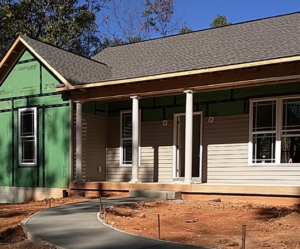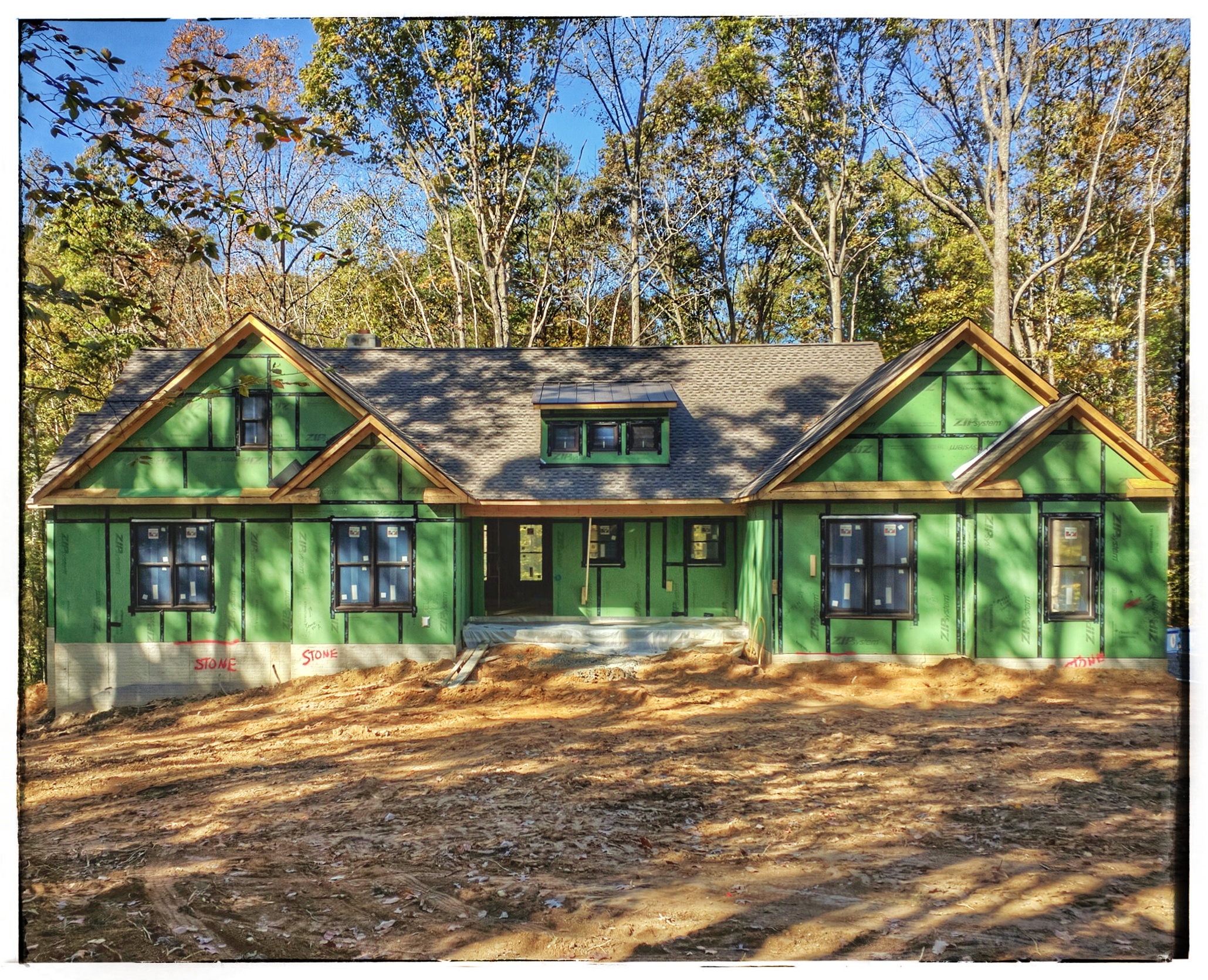Does it matter?
A permanent water and vapor barrier on the exterior of a home is best practice in the home-building industry and usually required by code. The standard way to do this is with a house wrap.
Most of the problems with house wrap fall into two categories – installation errors and damage to the wrap between the time it is installed and the time it is covered by siding. The wrap must be lapped correctly at horizontal and vertical seams, joints need to be taped correctly, and dealing with torn wrap is a common issues that must be corrected (and may be problematic). If taped seams are not completely sealed, the tape creates a reverse joint at the seam, potentially allowing water to enter at the seam.
Have you ever seen a home with house wrap that has missing or torn pieces? I have:

Do you wonder if it will be corrected, and, if so, whether the fix will work? I do.
For a good article on house wrap installation and potential problems, see this website:
http://www.greenbuildingadvisor.com/blogs/dept/guest-blogs/housewrap-tape-problems
The Zip System©
Zip is our product of choice for exterior sheathing and water/air barrier. It eliminates the potential for torn, taped, blowing in the breeze house wrap. Since the barrier is manufactured as part of the sheathing, it will not come off (believe me, we’ve tried). The taping of seams is done at the edges of each sheet of sheathing with a proprietary tape that is so strong, it won’t come off without some strenuous effort (again, we’ve tried).


Zip has other benefits as well and adds R-value to the home.
Yes, it is more expensive than house wrap, but it is worth it. As Ben Franklin once said, “The bitterness of poor quality remains long after the sweetness of low price is forgotten.”
For information on the Zip System©, see this website:

